 W
WIsidoor Bert Hans "Ido" Abram, was a Dutch educator and writer on the nature of Jewishness.
 W
WLodewijk Willem Christiaan van den Berg, or more commonly known as L.W.C. van den Berg, was a Dutch oriental scholar in the Dutch colonial era famous with his research on Arab Indonesians of Hadhrami descent, which was the first detailed research of its kind in the world at the time.
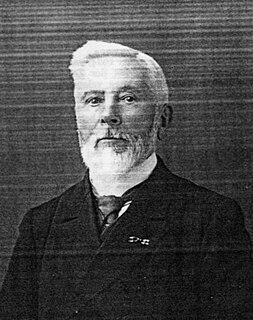 W
WSierk Coolsma was a Dutch Protestant missionary who wrote extensively on the Sundanese language. Born in the Netherlands, he became a missionary in his early twenties and arrived in the Dutch East Indies in 1865. First tasked to Cianjur, he studied Sundanese in more detail than his contemporaries, gaining an appreciation for the language. Further missionary activities in Bogor, begun in 1869, were a failure, and in 1873 he was tasked with translating the New Testament into Sundanese. Although the Sundanese people highly valued poetry, he did the translation in prose hoping that it would help readers entertain new ideas.
 W
WHan Bwee Kong, Kapitein der Chinezen, also known as Han Bwee Sing, Han Bwee Ko and in historic Dutch sources as Han Boeijko, was a Chinese-Indonesian magnate, government official and ally of the Dutch East India Company. He was the first member of the patrician Han family of Lasem to hold an official government position, that of Kapitein der Chinezen of Surabaya. He was also the pachter, or leaseholder, of the government districts of Besuki and Panarukan.
 W
WThe Han family of Lasem, also called the Han family of East Java or Surabaya, was an influential family of the 'Cabang Atas' or the Chinese gentry of the Dutch East Indies. They came to power in the Indies through their alliance with the Dutch East India Company in the 18th century. Originally from Lasem in Central Java, they figured prominently in the consolidation of Dutch rule in East Java and maintained a long tradition of government service as Kapitan Cina and priyayi in the Dutch colonial brueaucracy.
 W
WHan Oen Lee, Luitenant der Chinezen (1856—1893) was a Chinese-Indonesian magnate, who governed the Chinese community of Bekasi as its Luitenant der Chinezen, an important administrative post in the Dutch colonial bureaucracy. He was also the Landheer (landlord) of the particuliere land of Gaboes. Today, he is best known as the father of the late colonial statesman Hok Hoei Kan (1881—1951).
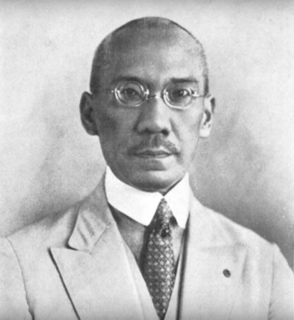 W
WKan Hok Hoei Sia, generally known as Hok Hoei Kan or in short H. H. Kan, was a prominent public figure, statesman and patrician landowner of Peranakan Chinese descent in the Dutch East Indies.
 W
WThe Khouw family of Tamboen was a bureaucratic and landowning dynasty, part of the Cabang Atas or the Chinese gentry of colonial Indonesia.
 W
WKhouw Kim An, 5th Majoor der Chinezen was a high-ranking Chinese Indonesian bureaucrat, public figure and landlord who served as the fifth and last Majoor der Chinezen of Batavia, Dutch East Indies. The Chinese Mayoralty was the highest-ranking, Chinese government position in the East Indies with considerable political and judicial jurisdiction over the colony's Chinese subjects. The Batavian Mayoralty was one of the oldest public institutions in the Dutch colonial empire, perhaps second only in antiquity to the viceregal post of Governor-General of the Dutch East Indies.
 W
WKhouw Yauw Kie, Kapitein der Chinezen, also spelled Khouw Jaouw Kie, Yaouw Kee, was a high-ranking Chinese-Indonesian bureaucrat. He was the first scion of the influential Khouw family of Tamboen to serve on the Chinese Council of Batavia.
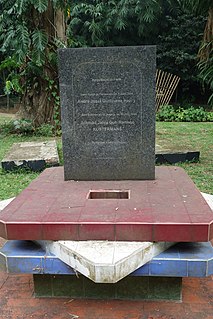 W
WDr. André Joseph Guillaume Henri 'Dok' Kostermans was an Indonesian botanist of Dutch ancestry. He was born in Purworejo, Java, Dutch East Indies, and educated at Utrecht University, taking his doctoral degree in 1936 with a paper on Surinamese Lauraceae.
 W
WKwee Thiam Tjing Sia, also known by his pen name Tjamboek Bērdoeri ['Thorn Whip'], was a prominent Indonesian writer, journalist and left-wing political activist. He is best remembered for his 1947 book, 'Indonesia dalem Api dan Bara', and for his role as a co-founder of the Partai Tionghoa Indonesia [the 'Chinese-Indonesian Party'] in 1932.
 W
WThe Lauw-Sim-Zecha family is an Indonesian family of mixed Peranakan Chinese and Indo-Bohemian descent that came to prominence at the start of the nineteenth century as Pachters, Landheeren (landlords) and mandarins in Batavia and Sukabumi, Dutch East Indies. The family formed part of the so-called 'Cabang Atas', or the Chinese gentry of colonial Indonesia.
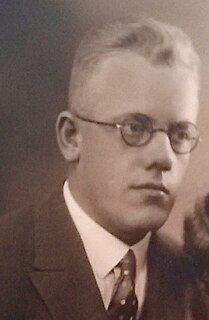 W
WLeendert (Leen) Konijn was a Dutch rubber planter (1920-1930) and entrepreneur in the cultivation of navel oranges and various citrus fruits at Lao Kawar, Mount Sinabung, North Sumatra, Dutch East Indies (1932-1942).
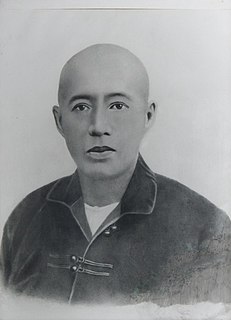 W
WLie Tjoe Hong, 3rd Majoor der Chinezen was a Chinese-Indonesian bureaucrat who served as the third Majoor der Chinezen, or Chinese headman, of Batavia, now Jakarta, capital of Indonesia. This was the most senior Chinese position in the colonial civil bureaucracy of the Dutch East Indies. As Majoor, Lie was also the Chairman of the Chinese Council of Batavia, the city's highest Chinese government body.
 W
WHenri Maclaine Pont was a Dutch architect and archaeologist active in Indonesia, acclaimed for his synthesis of Javanese and western architecture. He is seen as the "father" of modern vernacular architecture of Indonesia.
 W
WMaarten de Niet Gerritzoon was a Dutch politician.
 W
WAnton Willem Nieuwenhuis was a Dutch explorer and physician who travelled extensively in central Borneo in the 1890s, recording valuable ethnographic information about the Dayak people and making biological collections.
 W
WChristiaan Benjamin Nieuwenhuis, known as C.B. Nieuwenhuis, was a photographer in the Dutch East Indies.
 W
WCarl Lucas Norden, born Carel Lucas van Norden, was the Dutch American engineer who invented the Norden bombsight.
 W
WOei Hui-lan, known as Madame Wellington Koo, was a Chinese-Indonesian international socialite and style icon, and, from late 1926 until 1927, the First Lady of the Republic of China. She was married firstly to British consular agent Beauchamp Caulfield-Stoker, then to the pre-communist Chinese statesman Wellington Koo, and was a daughter and heiress of the colonial Indonesian tycoon Oei Tiong Ham, Majoor der Chinezen.
 W
WCharles Edgar du Perron, more commonly known as E. du Perron, was a famous and influential Dutch poet and author of Indo-European descent. Best known for his literary acclaimed masterpiece Land van herkomst of 1935. Together with Menno ter Braak and Maurice Roelants he founded the short-lived, but influential literary magazine Forum in 1932.
 W
WPieter Cnoll, also Pieter Knoll (1672), was a Dutchman who became Director General in Batavia. He married Cornelia van Nijenroode, an Indo Eurasian who was the daughter of Cornelis van Nieuwroode with a Japanese woman named Surishia. His family was depicted in a painting by Jacob Coeman.
 W
WCharles Olke van der Plas was an administrator in the Dutch East Indies colonial government who served as the Governor of the state of East Java from 1936 to 1941. He joined the Dutch civil service in 1908 and served as the Dutch consul to Jeddah in Saudi Arabia. Van der Plas was influenced by the Dutch Islamicist scholar Christiaan Snouck Hurgronje and became an expert in Indonesian society and politics, Islam and Arabic.
 W
WColonel Edward William Purvis was a British army officer and settler of the Kingdom of Hawaii who served as Vice-Chamberlain during the reign of King Kalākaua. After resigning from the royal household, Purvis published two political satires aimed at undermining the image of the king and his prime minister, Walter M. Gibson, who had been responsible for the removal of Purvis' superior. These actions and other factors led to the demise of the Gibson regime and the Bayonet Constitution of 1887. Purvis died in the following year, after going to the United States to seek medical attention for his health. According to popular legend, he was an expert player of the Portuguese machete or cavaquinho and was believed to be the inspiration for the name of the Hawaiian ukulele.
 W
WJosias Cornelis Rappard was a Dutch soldier and artist. Some of his paintings were made into lithographs and illustrations.
 W
WAmbrose J. Russell was an architect in Tacoma, Washington. He was Scottish but born to parents on mission in the East Indies, in the town of Trivandram, India. He was trained in Paris at the Ecole des Beaux Arts where he was a classmate of Bernard Maybeck.
 W
WCarl Julius Herman Salzwedel was a photographer in Java, Dutch East Indies during the late 19th century. He photographed people and architectural subjects. In the 1870s he partnered with Isidore van Kinsbergen at a portrait studio in Surabaya. Salzwedel then established his own successful studio in the city in 1879. Along with Charls & Van Es & Co (1884–1912) and O. Kurkdjian & Co (1888–1936), it was one of the best known photography studios in the city.
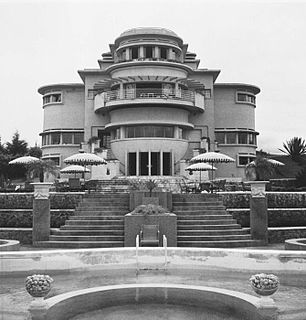 W
WCharles Prosper Wolff Schoemaker was a Dutch architect who designed several distinguished Art Deco buildings in Bandung, Indonesia, including the Villa Isola and Hotel Preanger. He has been described as "the Frank Lloyd Wright of Indonesia," and Wright had a considerable influence on Schoemaker's modernist designs. Although he was primarily known as an architect, he was also a painter and sculptor.
 W
WChristiaan Snouck Hurgronje was a Dutch scholar of Oriental cultures and languages and Advisor on Native Affairs to the colonial government of the Dutch East Indies.
 W
WSouw Beng Kong, 1st Kapitein der Chinezen, called Bencon in older Dutch sources, was an ally of the Dutch East India Company and the first Kapitein der Chinezen of Batavia, capital of colonial Indonesia. This was the most senior Chinese position in the colonial civil bureaucracy with legal and political jurisdiction over the local Chinese community in the colony.
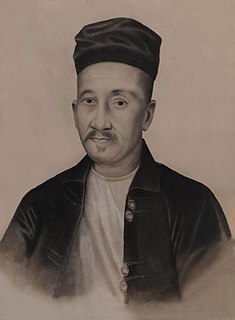 W
WTan Eng Goan, 1st Majoor der Chinezen was a high-ranking bureaucrat who served as the first Majoor der Chinezen of Batavia, capital of colonial Indonesia. This was the highest-ranking Chinese position in the civil administration of the Dutch East Indies.
 W
WTan Tjoen Tiat, 2nd Majoor der Chinezen was a Chinese-Indonesian bureaucrat who served as the second Majoor der Chinezen, or Chinese headman, of Batavia, now Jakarta, capital of Indonesia. This was the most senior Chinese position in the colonial civil bureaucracy of the Dutch East Indies. As Majoor, Tan was also the Chairman of the Chinese Council of Batavia, the city's highest Chinese government body.
 W
WTio Tek Ho, 4th Majoor der Chinezen was a Chinese-Indonesian bureaucrat who served as the fourth and penultimate Majoor der Chinezen or Chinese headman of Batavia, now Jakarta, capital of Indonesia. This was the most senior position in the Chinese officership, which constituted the Chinese arm of the civil bureaucracy in the Dutch East Indies. As Majoor, Tio was also the ex officio Chairman of the Chinese Council of Batavia, the city's highest Chinese government body.
 W
WTrisnojuwono is an Indonesian author, journalist and former revolutionary and military man born in Yogyakarta, 12 November 1925. He died in Bandung, 29 October 1996. Much of his literary work is based on his experiences as Pemuda during the Indonesian National Revolution and includes many unique eye witness accounts of this chaotic and violent period.
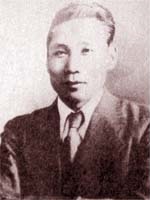 W
WTomegorō Yoshizumi was a Japanese spy and journalist who defected to Indonesia during the National Revolution. Born in Tōhoku region during the late stages of the Meiji period, in his early twenties he joined the Japanese expatriate community in the Dutch East Indies. Yoshizumi recruited locals for the Japanese spy ring in Java and Sulawesi, while also taking up employment for local Japanese newspapers. He was a noted follower of Japanese nationalism, and reportedly endorsed a "new order in East Asia". Although a civilian, he was inducted into the Imperial Japanese Navy, earning an officer's rank.